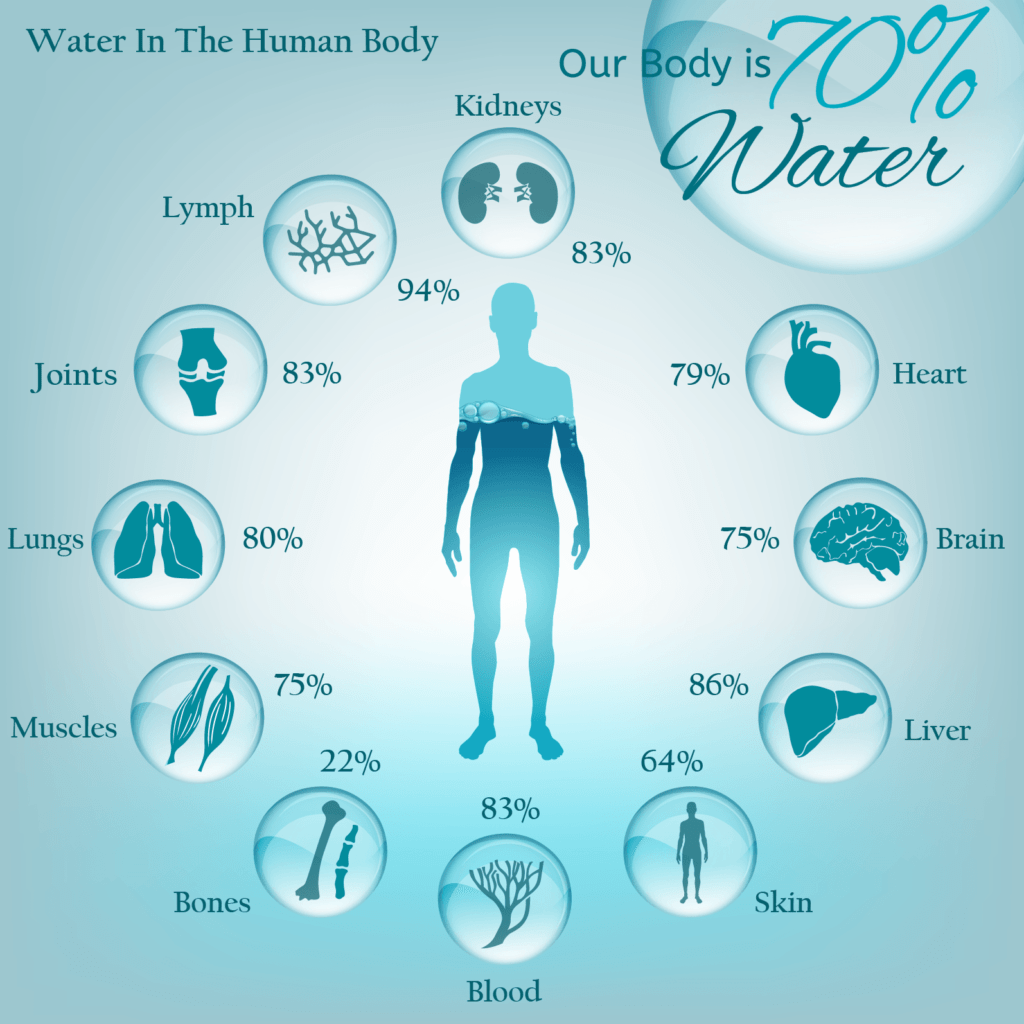Water and Our Health
The Dehydration Problem
Proper hydration is critical in maintaining good health, yet many individuals, particularly older adults, struggle with inadequate fluid intake. According to clinical studies, dehydration is prevalent among the elderly, with rates ranging from 17% to 28%. Even mild dehydration can impair physical and cognitive performance, and ongoing inadequate hydration has been associated with increased risk for conditions such as kidney stones, urinary tract infections, and impaired thermoregulation. While some authors have suggested broader links between dehydration and chronic diseases, these claims are still under scientific investigation and should be interpreted cautiously.

Water in Our Bodies
Our bodies’ cells are composed of approximately 70% water. Water is also the foundational element in constructing and maintaining all cells, tissues, and organs.
For health-conscious individuals interested in optimal health, it makes logical sense to consider the quality and nature of the water we put in our bodies, which is a critical component of life.
The Problem with Tap Water
Environmental Protection Agency (EPA) regulations dictate municipal water supplies’ pH and disinfection levels. Prior to our treatment plants, ferric chloride is often added to our source water reservoirs to aid in the control of phosphorus.
At the treatment plant, numerous chemicals are typically added to the water for a variety of purposes: aluminum sulfate for coagulation; ferric chloride for improved settling; fluoride for dental hygiene; calcium hydroxide for pH stabilization; chlorine, chloramine and ammonia for disinfection; stannous chloride, sodium silicate, zinc orthophosphate, and/or sodium hydroxide for corrosion control.
Beyond this, typical municipal water supplies can include a host of other harmful pollutants, including trihalomethanes, VOCs, PFAS, pesticides, herbicides, and pharmaceuticals, to name a few. Many of these chemical additives and pollutants are known to lead to an increased risk of cancer and a plethora of other health maladies.
Additionally, lead can enter our drinking water when plumbing materials containing lead corrode. This is especially true where the local water supply has high acidity or low mineral content, resulting in the corrosion of pipes and fixtures.
Considering all these factors, proper home filtration measures are critical to mitigate the potential detrimental health effects of these water additives and pollutants.
The Problem with Bottled Water
Additionally, scientific studies have proven that the chemicals used in manufacturing plastic bottles do leach into the bottle’s contents. The longer water sits in these bottles, which can easily be a year or more, the more leaching occurs. Exposure to ultraviolet rays has been shown to increase leaching in this regard. All of the chemicals used in the production of water bottles are suspected or proven carcinogens.
Furthermore, the breakdown of the plastic in these bottles results in the water being proven to contain significant quantities of micro-plastics and/or nano-plastics, which are an increasing health hazard.
Beyond this, unless chemically altered, a simple ORP test demonstrates that all bottled waters tend to be highly oxidative, which is the opposite of what our bodies need for proper health.
Of considerable environmental concern is the fact that plastic water bottles significantly contribute to the plastic epidemic we are currently facing. Americans alone produce about 50 billion water bottles a year, a substantial quantity of which end up in our oceans and other waterways.
